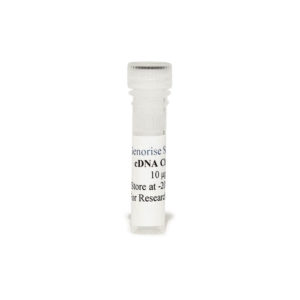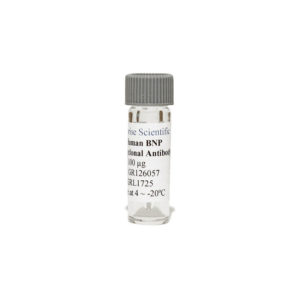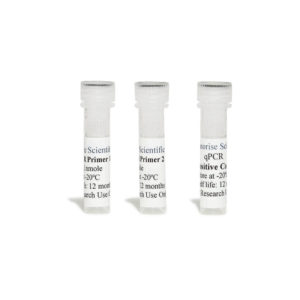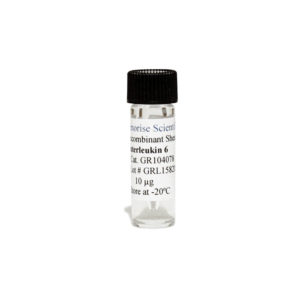Recombinant Canine TNFRI Protein
$99.00 – $456.00
The recombinant canine TNFRI protein is derived from in vivo expression of canine TNFRI gene in E. coli and purified using his-tag affinity column and can be used in multiple applications such as cell culture, ELISA and western blot.
Alternative names for TNFRI: tumor necrosis factor receptor I, TNF receptor 1, TNF RI, TNF Rp55/p60, TNFRSF1A
This product is for Laboratory Research Use Only not for diagnostic and therapeutic purposes or any other purposes.
- Description
- Product Citations
- Reviews (0)
Description
Genorise Recombinant Canine TNFRI Protein Summary
Alternative names for TNFRI: tumor necrosis factor receptor I, TNF receptor 1, TNF RI, TNF Rp55/p60, TNFRSF1A
Alternative name for canine: Dog
Product Specifications
| Purity | > 95%, by SDSPAGE under reducing conditions and visualized by silver stain. |
| Endotoxin Level | < 1.0 EU per 1 μg of the protein by the LAL method. |
| Activity | Measured by its ability to inhibit TNF-a mediated cytotoxicity in the L-929 mouse fibroblast cells in the presence of the metabolic inhibitor actinomycin D. Matthews N and Neale ML (1987) in Lymphokines and Interferons, A practical Approach. Clemens MJ et al. (eds): IRL Press. 221.
The ED50 for this effect is 0.05-0.1 µg/ml in the presence of 0.25 ng/ml of rcTNF-a. |
| Source | E. coli derived canine TNFRI. |
| Accession # | A0A8C0TE64 |
| N-Terminal Sequence Analysis | Met |
| Amino Acid Sequence | aa22-aa211 |
| Predicted Molecular Mass | 21 kDa |
| SDS-PAGE | 21 kDa, reducing conditions |
Background:
TNF receptor 1 (TNF RI; also termed TNF Rp55/p60 and TNFRSF1A) is a 55 kDa type I transmembrane protein member of the TNF receptor superfamily, designated TNFRSF1A (1, 2). Canine TNF RI is a 455 amino acid (aa) protein that contains a 21 aa signal sequence and 190 aa ECD with a PLAD (preligand assembly domain) that mediates constitutive dimer/trimer formation, followed by four CRD (cysteine-rich domains), a 23 aa transmembrane domain, and a 221 aa cytoplasmic sequence that contains a neutral sphingomyelinase activation domain and a death domain (3, 4). The ECD of canine TNF RI shows 23% aa identity with the ECD of TNF RII. Both TNF RI and TNF RII (TNFRSF1B) are widely expressed and contain four TNFα trimer-binding CRD in their ECD. However, TNF RI is thought to mediate most of the cellular effects of TNFα (3). It is essential for proper development of lymph node germinal centers and Peyer’s patches, and for combating intracellular pathogens such as Listeria (1, 2, 5). TNF RI is also a receptor for TNFβ/TNFSF1B (lymphotoxinα) (6). TNF RI is stored in the Golgi and translocates to the cell surface following proinflammatory stimuli (7). TNFα stabilizes TNF RI and induces its sequestering in lipid rafts, where it activates NFκB and is cleaved by ADAM17/TACE (8, 9, 16). Release of the 2834 kDa TNF RI ECD also occurs constitutively and in response to products of pathogens such as LPS, CpG DNA or S. aureus protein A (1, 10-12). Full-length TNF RI may also be released in exosome-like vesicles (13). Release helps to resolve inflammatory reactions, since it down-regulates cell surface TNF RI and provides soluble TNF RI to bind TNFα (10, 14, and 15). Exclusion from lipid rafts causes endocytosis of TNF RI complexes and induces apoptosis (1). Mutations of human TNF R1 can result in inflammatory episodes known as TRAPS (TNFR-associated periodic syndrome) (7).
References:
- Pfeffer, K. (2003) Cytokine Growth Factor Rev. 14:185.
- Hehlgans, T. and K. Pfeffer (2005) Immunology 115:1.
- Chan, F.K. et al. (2000) Science 288:2351.
- Schall, T.J. et al. (1990) Cell 61:361.
- Peschon, J.J. et al. (1998) J. Immunol. 160:943.
- Banner, D.W et al. (1993) Cell 73: 431.
- Turner, M.D. et al. (2012) Biosci. Rep. 32:105.
- Legler, D.F. et al. (2003) Immunity 18:655.
- Tellier, E. et al. (2006) Exp. Cell Res. 312:3969.
- Xanthoulea, S. et al. (2004) J. Exp. Med. 200:367.
- Jin, L. et al. (2000) J. Immunol. 165:5153.
- Gomez, M.I. et al. (2006) J. Biol. Chem. 281:20190.
- Islam, A. et al. (2006) J. Biol. Chem. 281:6860.
- Garton, K.J. et al. (2006) J. Leukoc. Biol. 79:1105.
- McDermott, M.F. et al. (1999) Cell 97:133.
Product Citations
Be the first to review “Recombinant Canine TNFRI Protein”
You must be logged in to post a review.





























Reviews
There are no reviews yet.